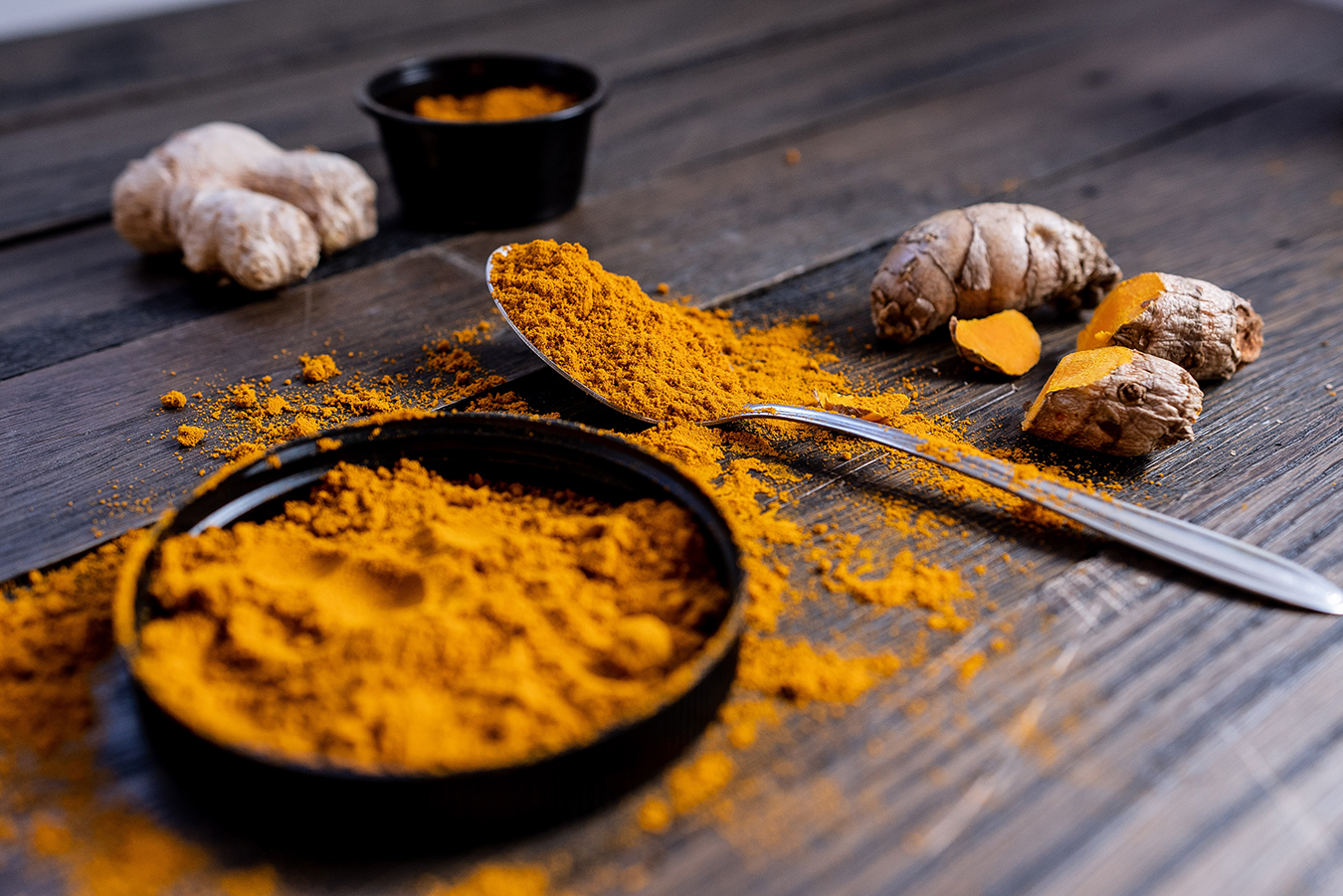The Many Uses of Turmeric

Turmeric, a member of the ginger plant family, has its origins in Southeast Asia and is grown commercially there, particularly in the Subcontinent. The benefits of the herb are limitless and it is arguably best known as the major spice in curry. Turmeric has a warm, bitter flavor and is commonly used to season or color curry powders, mustards, kinds of butter, and cheeses. Its underground stem is utilized in both cooking and conventional medicine. The key element of turmeric is curcumin, which possesses potent biological functions. The herb is recommended for a range of health concerns by Ayurvedic medicine, an ancient South Asian system of therapy. Chronic pain and inflammation are two such examples. Turmeric is being studied in Western medicine as a pain reliever and healing agent today and is being recommended as a health supplement for a wide range of ailments, including respiratory diseases, joint pain, liver illness, digestive problems, allergies, anxiety, depression, and many more. This article has been written to introduce you to the many uses of turmeric.
1. Fighting Inflammation
Inflammation is a very significant process. It aids in the battle against foreign invaders and assists in the restoration of bodily harm. Although intense, short-term inflammation is useful but can be dangerous if it becomes persistent and starts damaging one’s own tissues. According to studies, turmeric may be good for chronic illnesses when inflammation begins to impair tissues in your body. Curcumin has the capacity to decrease several compounds known to play important roles in inflammation, however, its bioavailability must be improved, or it must be taken in high doses.

2. As a seasoning
Turmeric may also be used as a seasoning or dressing for a variety of foods. Use the herb in your favorite salad dressing to make it simple to incorporate. For a simple and strong dressing, combine tahini, white miso paste, apple cider vinegar, and turmeric. Powdered turmeric is also an excellent addition to a spice blend. To build your own customized Moroccan spice mix, combine the aromatic yellow powder with sweet Spanish paprika, cumin, salt, dried thyme, and pepper. Use it to sprinkle or rub on everything from vegetables and grain salads to fish and poultry. Using turmeric-based seasoning transforms a regular grilled chicken into an exotic-flavored crispy dish.

3. Preventing Heart disease
This yellow plant may lessen the risk of heart disease due to its ability to reduce inflammation and oxidation. The herb has been shown in studies to help halt the progression of heart disease. It may also be beneficial when used with cholesterol-lowering medicine. Curcumin has been shown in studies to be safe and may protect persons at risk of heart disease by decreasing specific levels of cholesterol. It may even be useful in postponing or correcting several brain disorders and age-related declines in brain function by increasing the longevity of neurons in the brain. Curcumin may also aid with the memory and concentration of the user.

4. Cultural Talisman
Turmeric’s significance in South Asian culture extends well beyond medicine. The herb is considered favorable and sacred in Hinduism. A wedding day ritual involves the groom tying a thread stained yellow with turmeric pigment around the bride’s neck. A Mangala Sutra necklace symbolizes that the woman is betrothed and suitable for managing a family. The custom is still practiced in Hindu communities and has been equated to the Western custom of exchanging engagement rings. A chunk of the plant’s rhizome is donned as a talisman in regions of southern India to ward off wicked spirits. The herb is also associated with fertility, luck, and the sun in both Hinduism and Buddhism. It is therefore traditionally used in marital rituals, and the roots of its plants are frequently given as a present to pregnant mothers.

5. A colorful herb
Turmeric enjoys interacting with other ingredients/items. When preparing rice or curries, add the spice to the boiling liquids. With the addition of this wonderful herb, spice, orange zest, and dried fruit, simple basmati rice is turned into a kaleidoscope of jewel colors of red and yellow. A large sprinkle of saffron adds taste and color if your budget permits. Turmeric is used in practically all curry and gravy meals in India. It adds a beautiful color and a distinct taste to the cuisine.

6. As a pesticide
Apart from its therapeutic benefits, the plant’s juice, essential oil, and aqueous extracts have been linked to intriguing pesticidal capabilities against agricultural pests as well as repellant action against harmful mosquito types. So far, experimental studies and statistics from published literature have shown that turmeric shows great promise as a natural pesticide for plausible use in crop improvement, and thus a highly promising future in this area, that is, the possibility of actual governance of certain agricultural pests with the use of turmeric commodities as an economical and much more environmentally friendly alternative to synthetic pesticides already used for the same intent.

7. Turmeric Dyes
The plant’s inherent yellow tint has been used for ages to dye fabrics and thread. The herb is used to dye saffron-colored Buddhist attire. Dyeing with this spice can be an incredible introduction to natural dyeing. During the Onam celebration in Kerala, a district in southwest India, kids were given turmeric-dyed garments to wear. The rationale for this is unknown, however, it is most likely related to the color’s affiliation with Lord Krishna. The fade patterns that may emerge on a turmeric-dyed garment that has been exposed to the sun can be quite beautiful, and the herb is one of the dyeing products that uses the fewest chemicals, making it an excellent choice if you want to engage some curious children in your project.

Buy National Turmeric Powder and enjoy the many benefits of this very extraordinary herb!